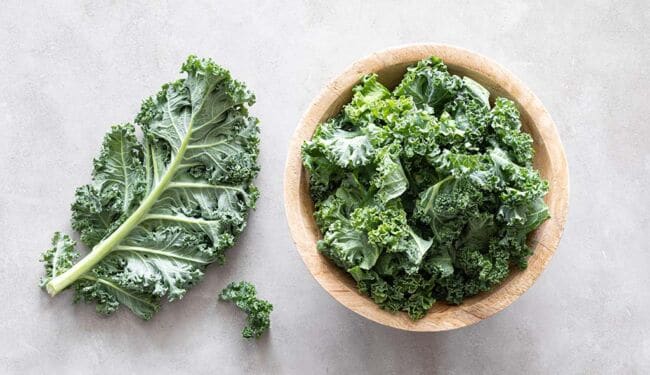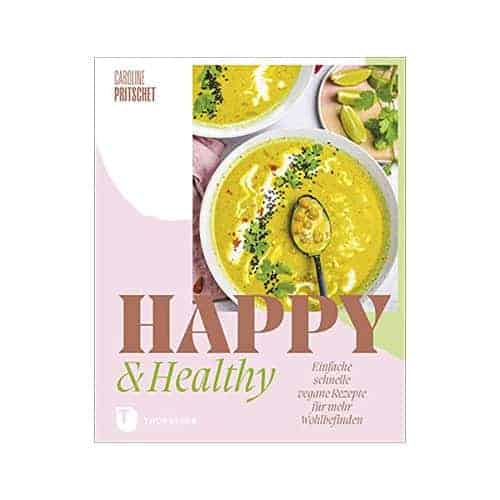Today I would like to write about a topic that has been close to my heart for some time. There are always rumors out there that if you live vegan, you will develop must develop an iron deficiency . As is so often the case with nutritional topics, there are a great many myths and few valid facts that are carried on and on in “hearsay” mode. In this post, I would like to explain what iron actually is exactly and why it is such an important factor for our health. We will also take a look at the iron supply in the population, how a deficiency can be optimally prevented, who has an increased iron requirement and much more. With this in mind, PIMP MY IRON!
Iron is essential for vegans and non-vegans
Iron supply is a worldwide problem and WHO describes it as. the most common nutrient deficiency . In about 10% of women and 3% of men in Germany, iron reserves are depleted regardless of the type of diet (BfR, 2008)
At coffee klatch a few weeks ago, a friend told me that she has a massive iron deficiency. She noticed it, because she had been feeling a leaden fatigue and would have preferred to just sleep. The visit to the doctor confirmed her suspicions and a severe iron deficiency was detected via a blood test. According to traditional understanding, the assumption would be that she probably ate too little meat? Unfortunately, the rumor persists, yet anyone can develop a deficiency regardless of their diet. I can already say with certainty that my friend certainly did not lack meat. Before we get to the foods containing iron, let’s take a look at the essential trace element.
Humans cannot produce iron themselves and must take it in regularly with food. The trace element is indispensable for blood formation and the central element of the blood pigment hemoglobin. Iron is a component of enzymes and proteins and is essential for their functions. It is important to note that we do not need iron in large quantities, but only in traces. Taking high doses of iron supplements is therefore only advisable under medical supervision.
Vegan iron supply
There are two different forms of iron found in our food. Hem iron in divalent form and non-heme iron in trivalent form.
The difference between the two forms of iron:
- Hemiron (divalent form) is abundant in meat and can be absorbed directly through the intestine
- Non-heme iron (trivalent form) is abundant in vegetables and grain products, but is less accessible and must first be converted to divalent iron
TIP: The absorption of iron from plant sources can be increased two- to threefold by combining with a product containing vitamin C two- to threefold. Possible combinations are hummus with fresh peppers or potato, oatmeal and orange juice. Try the Chai Porridge with Tahini Caramel, Porridge with Turmeric or Banana Toffee Porridge. In addition, fermented products have been shown to promote the absorption of iron. You can find a recipe for fermentation of vegetables here.
In addition, there are foods that should rather be avoided to foods containing iron. These include tannins, oxalates or phytates, which are found in coffee, as well as green and black tea. The coffee or tea is best drunk at an interval of half an hour before or after breakfast, so the iron can be absorbed optimally (preferably in combination with a source of vitamin C.).
NOTE: The optimal supply of iron through plant foods depends on a clever combination. A rule of thumb formula is to combine iron-rich foods with a good source of vitamin C. Keep distance of at least 30 minutes from the consumption of coffee and teas (green/black).
Iron rich plant foods
- Dried fruits: apricots, bananas, dates
- Nuts and oilseeds: Pumpkin seeds, sesame seeds (tahini), pistachios, flax seeds, sunflower seeds, and many more.
- Legumes: lentils, beans of all kinds, tofu
- Cereals and pseudocereals: quinoa, brown rice, amaranth, millet, oats, spelt and green spelt (note: prefer whole grains, a high degree of milling (flour type 405 or 550) has only a fraction of minerals and trace elements)
- Vegetables: mushrooms, fennel (raw), lamb’s lettuce, endive, salsify (cooked), spinach (not too large quantities because of oxalic acid), arugula, zucchini, peas.
What happens when there is an iron deficiency?
In the first step, storage iron is reduced, resulting in a lowered ferritin level. If the deficiency becomes more severe, the precursors of the blood cells in the bone marrow lack iron. From this, iron deficiency anemia may manifest and red blood pigment deficiency develops. In the blood count, this is indicated by a reduced level of hemoglobin, which can be detected by a small blood count.
Symptoms of iron deficiency may include:
- Fatigue
- Listlessness
- Exhaustion states
- Susceptibility to infection
- Sleep disorders
- Pale, cracked skin
- Depressive moods
- Dizziness, headaches, concentration problems
- Torn corners of the mouth, brittle nails
- Hair loss
- Restless Leg Syndrome
How can I determine my iron value?
Regardless of the symptoms described above, iron levels can be determined by hemoglobin (Hb) levels. However, there are other parameters that can indicate a deficiency much earlier. Specifically, it makes sense to determine the following values at the doctor’s office:
- Ferritin (determination of the expression of the deficiency by the iron storage value) *here, for example, there is a test from Cerascreen.de, which you can perform at home (unpaid)
- To have the inflammation value CRP determined, i.e. the level of C-reactive protein in the blood.
- Tranferrin saturation: Transferritin is a protein that transports iron in the blood- low tranferrin saturation may indicate a deficiency.
Supplements without knowing the blood values?
Supplementation without knowing the exact blood values makes only limited sense. In any case, it is not advisable to take high-dose iron supplements without first determining iron levels and consulting a physician. The first step is always prevention through smart food choices as described above. There is now a wide range of plant-based supplements, especially for people with increased iron requirements.
Here are my personal favorite products:
- VOELKEL bioC Iron naturvital https://amzn.to/34HCeSq
- RAPUNZEL Sugarcane Molasses or VITAM Appleford’s Molasses https://amzn.to/3lkXAel
- GSE Iron & Vitamin C Complex https://amzn.to/32thwTA
- SALUS Floradix with iron https://amzn.to/3lB9OzE
Wan results in an increased demand for iron
- For pregnant women, nursing mothers and women of childbearing age
- For children in the growth phase
- In case of insufficient iron intake from food (in any dietary form).
- In seniors (in conjunction with decreased appetite).
- In case of increased blood loss
Feeding recommendations
- 10mg/day (men)
- 15mg/day (women)
- 30mg/day (pregnant women)
- 20mg/day (breastfeeding)
I hope I have been able to dispel some of the myths about iron supply and provide a tip or two on the subject of iron. If you have any questions, or would like to share your own experience, feel free to post a comment below.
Sources:
- Goodbye Vegan Cliché, Niko Rittenau, 2019 https://amzn.to/3b6tE0x
- Ecodemy.com
- BfR.de
- https://www.dge.de/wissenschaft/referenzwerte/eisen/

